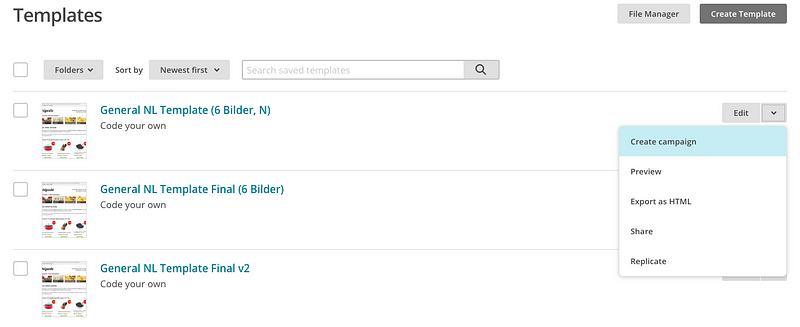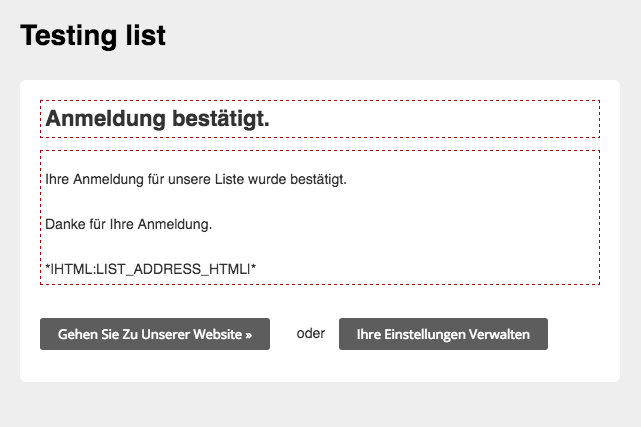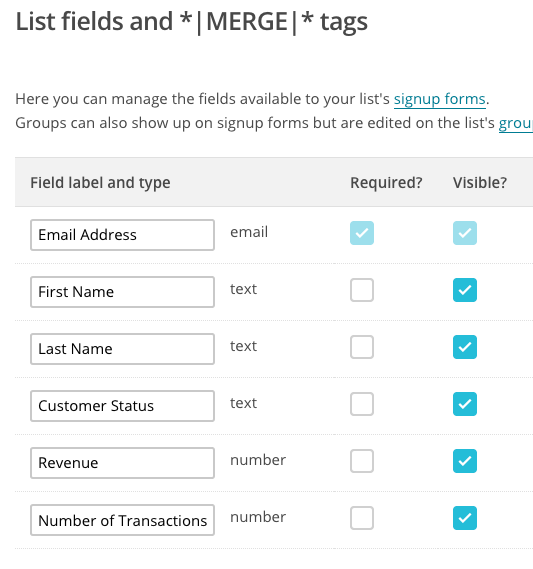By Aaron Rosen
Here at Project A we love working with Mailchimp — whether it’s for our own use or in the scope of supporting our portfolio companies. Mailchimp is without a doubt one of the best email marketing tools out there: it is beautifully designed and easy to use — just right for getting started.
As a newbie learning the ins and outs of the platform, it’s easy to overlook some important settings that can potentially ruin your campaign. So, today I’d like to share with you four different mistakes commonly made by MailChimp users and how to avoid making them yourself.
Mistake #1: Creating Numerous Lists Instead of Segments and Groups
As a new user, it’s common to upload new contact lists for each campaign that you create. As a result, you’ll end up with numerous lists in your account, not only with different names but also with duplicate contacts.
When people unsubscribe from your mailing, they automatically unsubscribe from the list the mailing was sent to. If you have duplicate contacts in different campaign-specific lists, they’ll keep receiving your mailings even if they unsubscribed. This means that you would need to update your lists manually to remedy this — and who wants to do that?
A simple way to avoid this situation is by using a global contact list and creating specific segments and groups for each campaign. Another good reason to choose this approach is Mailchimp’s pricing model. The pricing is per contact, which means that one large list is a lot cheaper than several lists with lots of duplicate contacts.

Mistake #2: Customizing Templates Instead of Campaigns
When creating a campaign, you can choose a specific template that defines the design of the mailing. Once you have chosen a template you have the option of editing this template to fit the needs of the campaign you want to send. However, if you do so, the next mailing you send will also be based on this template, and some of the elements that you may need for the new campaign might be gone.

The best practice in this case is to keep templates very general, with all the elements you might need, and always select “Create Campaign” before making changes for the specific mailing. Never make campaign-specific changes in the template itself.
This way you will have more flexibility when starting a new campaign. If you want to send a campaign that is very similar to a previous one, for example another Christmas mailing, you can simply duplicate the previous campaign in the campaign view. That way you don’t have to start from scratch.
Mistake #3: Not Customizing Default Forms
MailChimp automatically generates a sign-up form for every list you create. If you don’t customize it, your contacts will get the default sign-up form, which can be inconvenient in several ways. For starters, the default sign-up shows the name of your list, and if that’s something like “Christmas-follow-up-mailings-xys” you might not want your customers to see it. To avoid this, always remember to customize the sign-up form before sending out a campaign.
Another example is the language settings. If you use the standard form in German, you might end up with a button which is badly translated from English. “Continue on our website” shows up in German as “Fahren Sie auf unserer Website,” which literally means “Drive on our website”.
Always check the wording in your forms, especially when sending out campaigns in different languages.

Mistake #4: Not Hiding Your List Fields
In Mailchimp you can manage the fields that are visible in the different forms your customers can access, for example the sign-up form and the preference form. This is important because when you send out a campaign your subscribers usually see a link for updating their preferences at the end of the mailing. If you don’t hide some of your list fields on these forms, they’ll be able to see and change all the information there.

For instance, they could change their customer status to “Premium Customer” or “VIP” and get special offers that were not originally intended for them. Or they could change their name or title if those fields are included on your list. To avoid this simply uncheck the “Visible” box for the fields you don’t want your customers to see and edit. You can do this under the Lists > Settings > List fields and *|MERGE|* tags.

Summing Up
It’s best to have one global list and target specific groups and segments for your different campaigns. Customize campaigns rather than templates, and remember to check the default forms. If you heed this advice, you will adeptly avoid the most common Mailchimp mistakes and lay the necessary groundwork for a successful campaign!
Originally appeared on Onlinemarketing.de